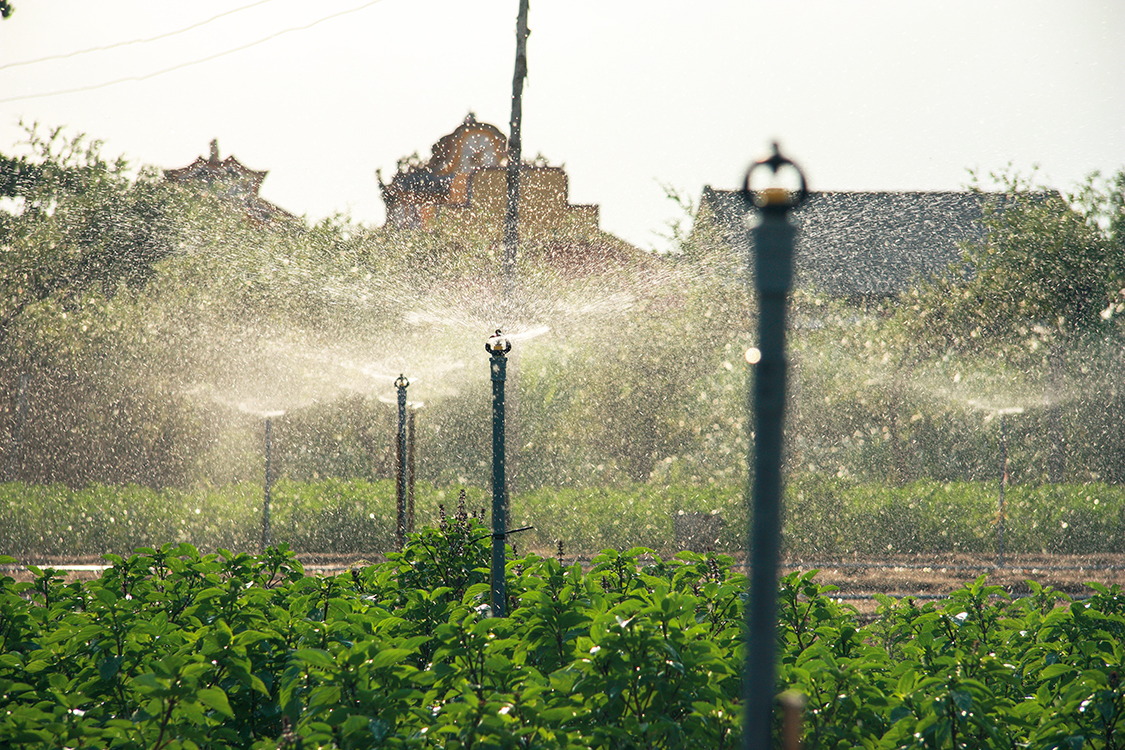Vietnam: a flexible, sustainable supply chain

Market Building
Climate-smart technology is sold through pre-existing retailers who have been trained on how to use it and sell it.
In 2010 in Vietnam, iDE stimulated the market by stocking farm supply retail shops with an initial shipment of micro-irrigation technology (MIT) components the retailer did not already supply, the most common being micro-sprinklers. This stock was imported by iDE from India and Myanmar and sold to suppliers at cost. Retailers didn’t have to pay for the stock when it was delivered to them, but only after they had sold it at whatever price they had set for it. iDE trained these retailers about MIT benefits and installation. iDE also encouraged the retailers to identify local sources for similar materials to avoid having to import them into Vietnam, managing to obtain some materials in Ho Chi Minh City. Interestingly, the main advantage for retailers in stocking micro-sprinklers was increasing their pipe sales, which typically had a high profit margin.

This model allowed retailers to test the market viability of a new product while iDE shouldered the initial financial risk. If retailers realized financial gain from climate-smart technology, they were then encouraged to identify their own sourcing for MIT materials. One retailer who had the most efficient supply chain to source new products eventually became the project’s primary wholesaler; other retailers now tend to rely on this wholesaler for certain products.
iDE needed to find an appropriate balance to neither hinge the market on one supply channel, nor allow a surplus of retailers to exhaust the market.
Three main factors can be attributed to the success of the supply chain in establishing the last mile distribution system.
- Climate-smart technology was first made affordable and accessible to farmers through decentralized private sector distribution. iDE’s market development strategy enabled market competition, which promoted efficient and flexible sourcing strategies. For example, the project’s main wholesaler leveraged his business network in Ho Chi Minh City to shift between suppliers when he ordered monthly shipments. Additionally, retailers sourced MIT components from various suppliers. While there was only one project wholesaler, retailers chose this source for certain components due to convenience not necessity. This design promoted flexible supply chains where there are multiple brokers and supply channels in the system.
- Second, the shift from government-led subsidized approaches to disseminating improved technologies allowed increased and sustained supply chains. iDE made use of their government project partners to catalyze the MIT market rather than be a lasting integral member of the supply chain. Retailers consistently reported the majority of their customers were already aware of climate-smart technology before entering their shop due to iDE’s promotion strategies.
- Finally, the interaction between farmer and private sector generated product innovations that reduced costs. Retailers began stocking cheaper climate-smart solutions, such as hand-made and knock-off brand-name micro-sprinklers as well as cheap water redirection components. Before the MIT project, there were only a few micro-sprinklers available, such as the Netafim branded emitter costing US$0.64 per unit. After iDE’s intervention, the wholesaler began stocking nearly 20 non-Netafim sprinkler products, which included a knock-off Netafim emitter at US$0.29 per unit. Farmers were also introduced to a hand-made sprinkler head that retailers began to produce and sell for US$0.12 per unit. While the wholesaler and retailers admit to making little profit margin on sprinkler emitters, the climate-smart concept has increased pipe sales, which are the highest profit margin component of the system.

Farmers reported ease in finding low-cost, quality MIT materials and claimed that product longevity is actually five plus years compared to iDE’s initial three and a half year estimates. Retailers reported steady consumer demand due to high referral rates. The project’s wholesaler recently reported expanding his retail customer base. Although he typically sold to retailers in nearby vicinities (within 40 kilometers), he began selling as far as the Central Highlands, Hue, and Quang Tri (up to 1,000 kilometers). The wholesaler reported sales to not only smallholder farmers, but also national research institutes and mid-size commercial enterprises.
iDE’s last-mile supply chain development efforts generated a niche MIT service. Many early MIT adopters became installation specialists whom retailers and the Farmers Union refer to new adopters. This helped sales grow while developing a sustainable marketplace that continues to make climate-smart technology available for rural farmers.

